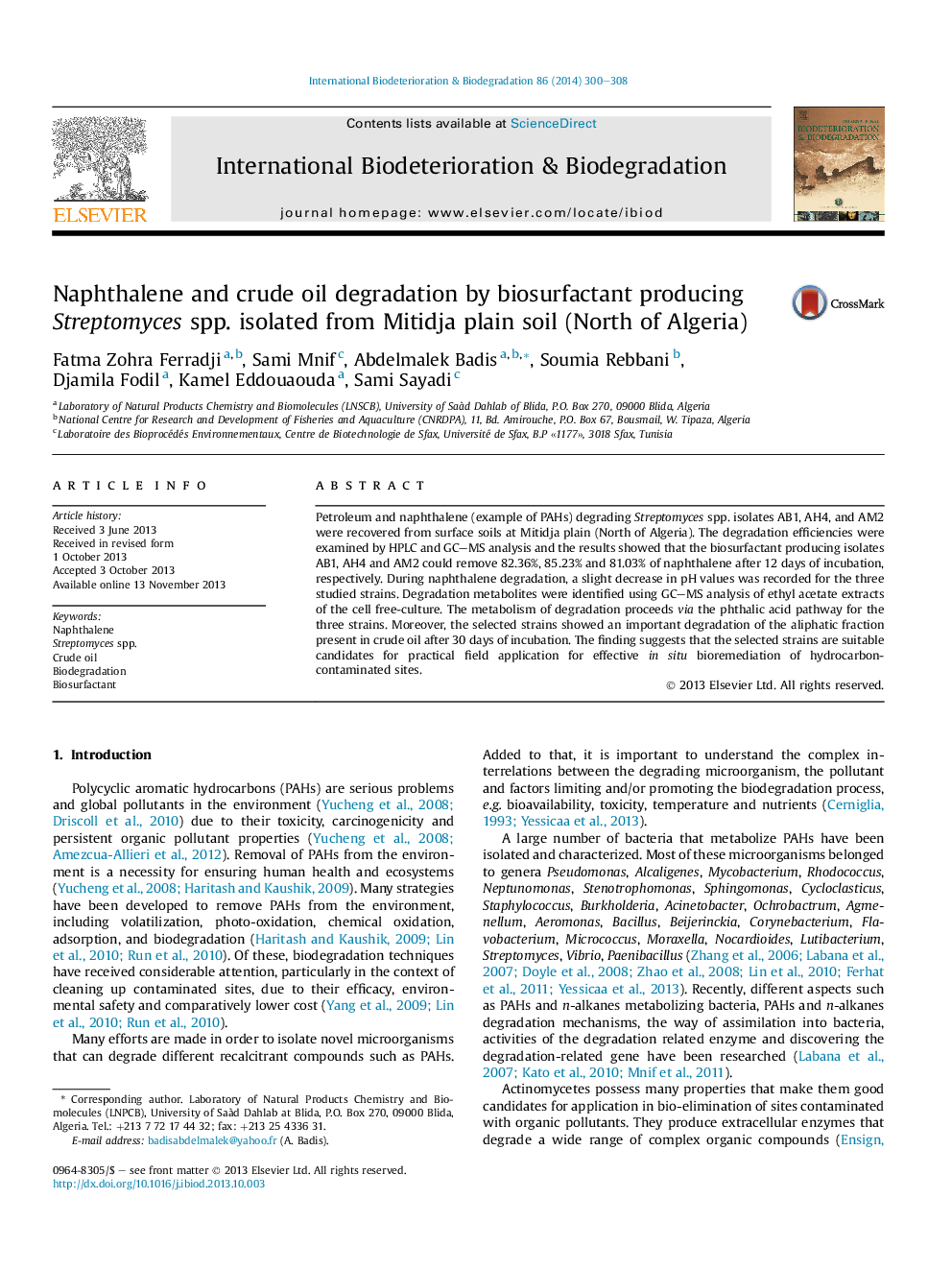| Article ID | Journal | Published Year | Pages | File Type |
|---|---|---|---|---|
| 4364816 | International Biodeterioration & Biodegradation | 2014 | 9 Pages |
•Three Streptomyces strains were active in petroleum and PAHs degradation.•The aliphatic fraction present in crude oil was completely degraded.•The metabolism of naphthalene degradation proceeds via the phthalic acid.
Petroleum and naphthalene (example of PAHs) degrading Streptomyces spp. isolates AB1, AH4, and AM2 were recovered from surface soils at Mitidja plain (North of Algeria). The degradation efficiencies were examined by HPLC and GC–MS analysis and the results showed that the biosurfactant producing isolates AB1, AH4 and AM2 could remove 82.36%, 85.23% and 81.03% of naphthalene after 12 days of incubation, respectively. During naphthalene degradation, a slight decrease in pH values was recorded for the three studied strains. Degradation metabolites were identified using GC–MS analysis of ethyl acetate extracts of the cell free-culture. The metabolism of degradation proceeds via the phthalic acid pathway for the three strains. Moreover, the selected strains showed an important degradation of the aliphatic fraction present in crude oil after 30 days of incubation. The finding suggests that the selected strains are suitable candidates for practical field application for effective in situ bioremediation of hydrocarbon-contaminated sites.
